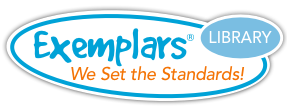Grade 4 - Whole Number and Decimal Place Value Unit
Standards covered:
- 4.2 Number and operations
-
4.2A
Interpret the value of each place-value position as 10 times the position to the right and as one-tenth of the value of the place to its left.
-
4.2B
Represent the value of the digit in whole numbers through 1,000,000,000 and decimals to the hundredths using expanded notation and numerals.
-
4.2C
Compare and order whole numbers to 1,000,000,000 and represent comparisons using the symbols >, <, or =.
-
4.2D
Round whole numbers to a given place value through the hundred thousands place.
-
4.2E
Represent decimals, including tenths and hundredths, using concrete and visual models and money.
-
4.2F
Compare and order decimals using concrete and visual models to the hundredths.
-
4.2G
Relate decimals to fractions that name tenths and hundredths.
-
4.2H
Determine the corresponding decimal to the tenths or hundredths place of a specified point on a number line.
- 4.3 Number and operations
-
4.3G
Represent fractions and decimals to the tenths or hundredths as distances from zero on a number line.
The Whole Number and Decimal Place Value Unit involves understanding and representing the relative position, magnitude and relationships within the numeration system in order to answer questions such as:
- How can you use the additive property of place value to decompose this number?
- How can you use the multiplicative property of place value to describe the meaning of each digit in the number 9,876,543.21?
- How can you use the base ten property of place value to explain the relationship between each of the digits in the number 5,555,555.55?
- How can you use base ten blocks or money to represent this decimal? What is ONE?
Summative Assessment Task
Using symbols, students determine which girl scored the most points in each round of a computer game.
Instructional Tasks/Formative Assessments
Students determine which of two brick towers is tallest and which tower uses the most bricks in its construction.
Students determine which insect home is larger, a honeybee hive or a wasp nest.
Students estimate the total number of seats in 5 baseball stadiums.
Students compare the numbers of pop tops collected at two schools, and determine if either school has reached their goal of collecting one million pop tops.
Students use symbols to express which student traveled the most miles to watch their favorite football team.

The N/A classification refers to TEKS Standards that cannot be assessed through problem solving.
For this reason, tasks have not been included for these particular standards.
K.7A K.7B K.9B K.9C K.9D